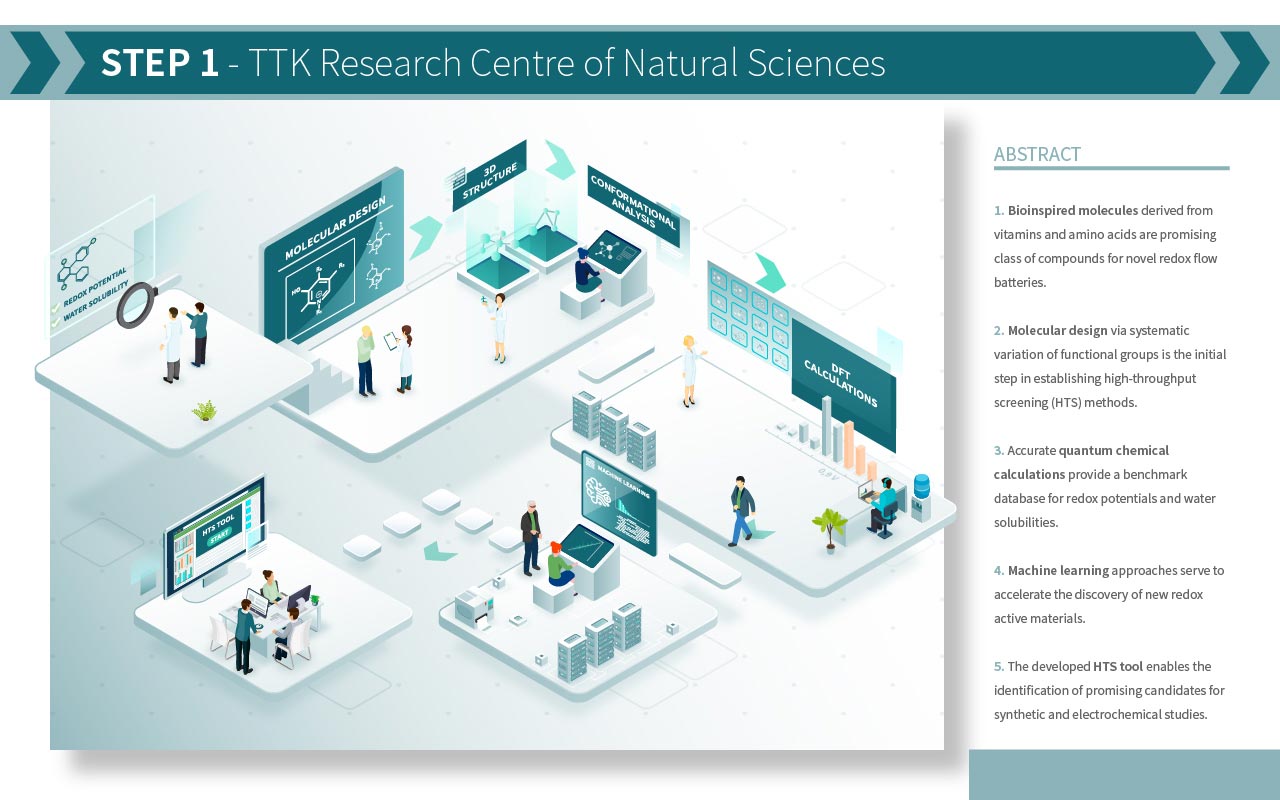The TTK research team is involved in developing high-throughput screening (HTS) methods that enables the identification of promising candidates of water-soluble redox-active compounds for experimental synthesis and electrochemical characterization. The focus is on bioinspired molecules derived from vitamins and amino acids, which are promising candidate compounds for novel redox flow batteries (RFBs). Our general strategy along these lines is to build an initial database for two basic quantities relevant to RFBs (redox potentials and aqueous solubilities), and utilize various machine learning techniques to provide efficient screening methodology applicable for a large and diverse set of molecules.

Molecular design via systematic variation of functional groups is the initial step in our approach. The molecular database is built in a combinatorial manner: We define various molecular frameworks and introduce substituents with broadly varying electronic and steric properties. In our developed protocol, we first generate the 3D structures of the molecules, which is followed by an extensive conformational analysis to find the energetically most favored molecular structures.


The redox potentials and aqueous solubilities are computed via an efficient composite protocol that employs a combination of various modelling tools ranging from simple force-field methods to advanced quantum chemical calculations, but also including semiempirical computational methods. Accurate quantum chemical calculations represent the computationally most demanding step of our protocol. These calculations are carried out using density functional theory (DFT) and we use high-performance computer facilities to obtain accurate electronic structure data.

The developed molecular database is used to train and validate various machine learning approaches in the next phase of the project. The molecular library is then expanded iteratively in terms of the number of molecules, as well as the diversity of molecular frameworks. This procedure will thus result in a HTS tool that is applicable to a large set of redox-active compounds and will assist the discovery of new prospective candidates for next generation flow batteries.
